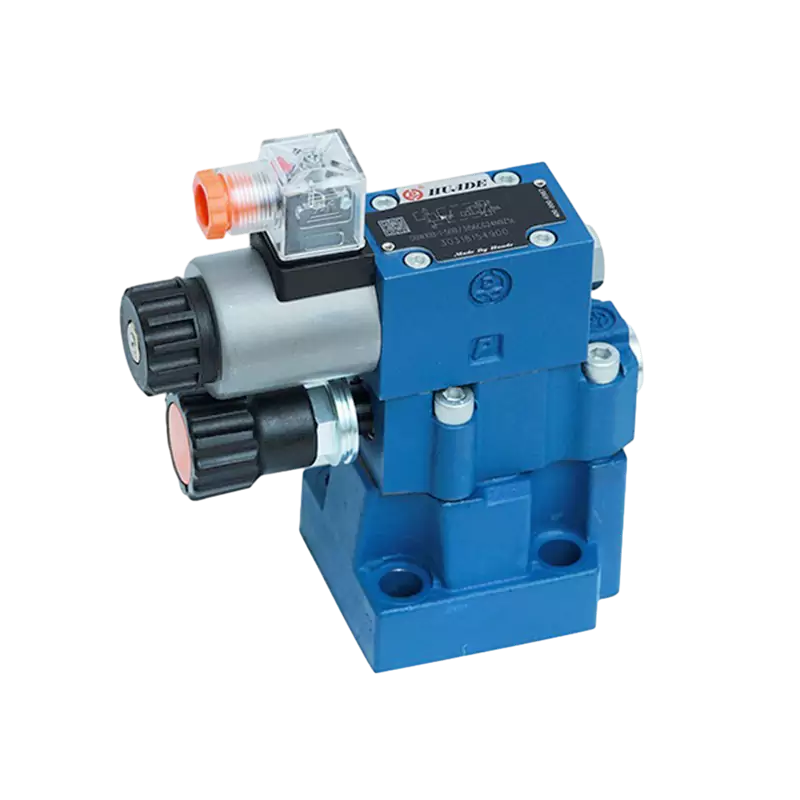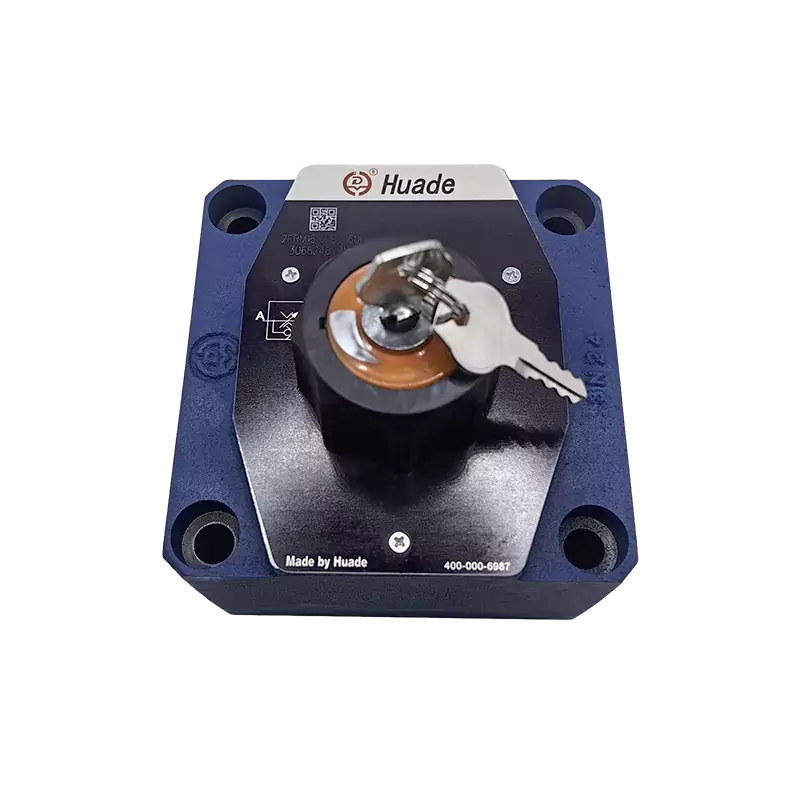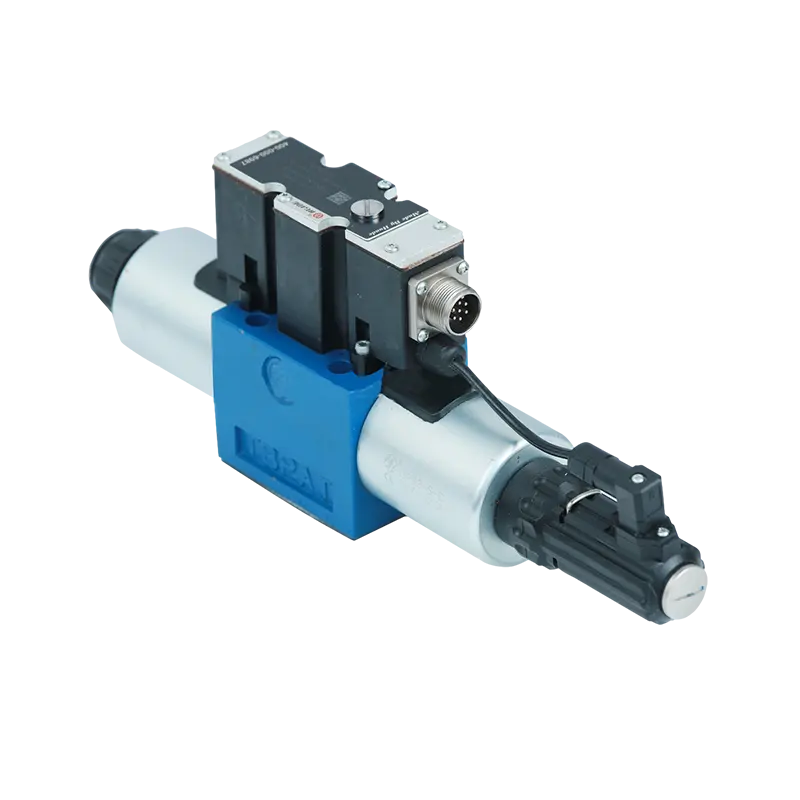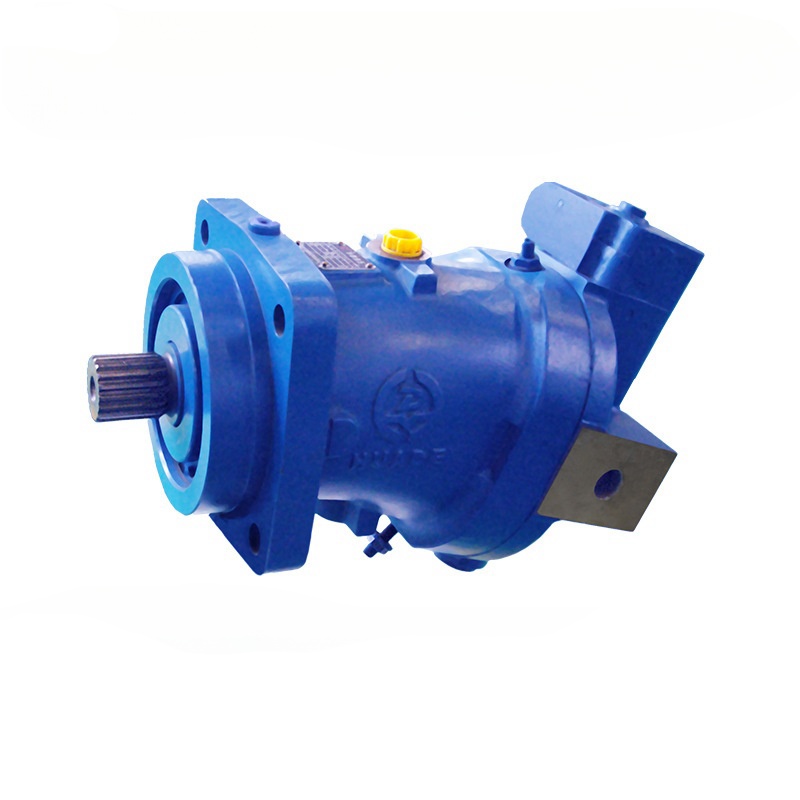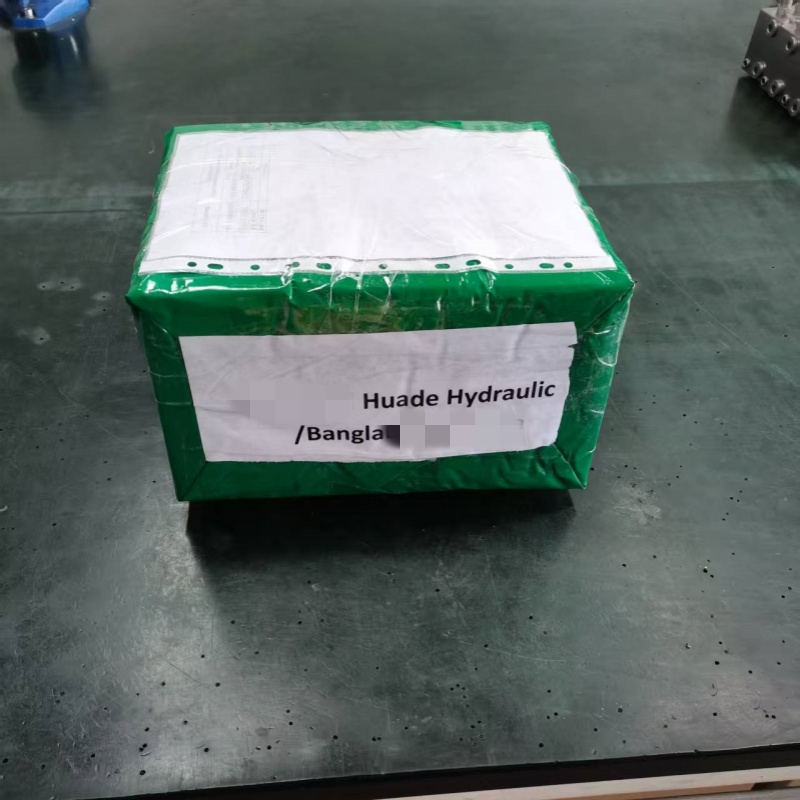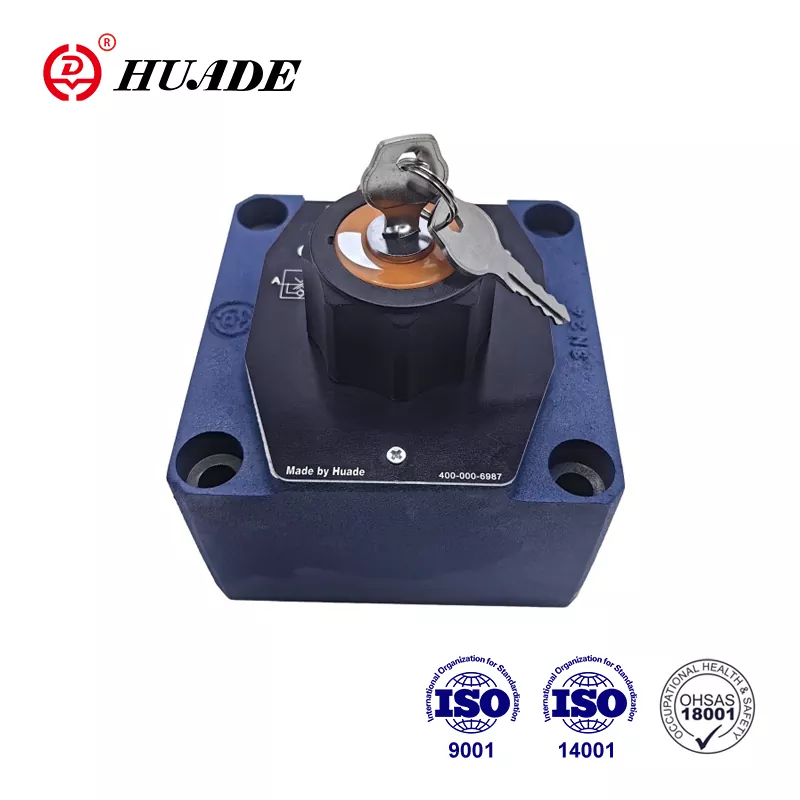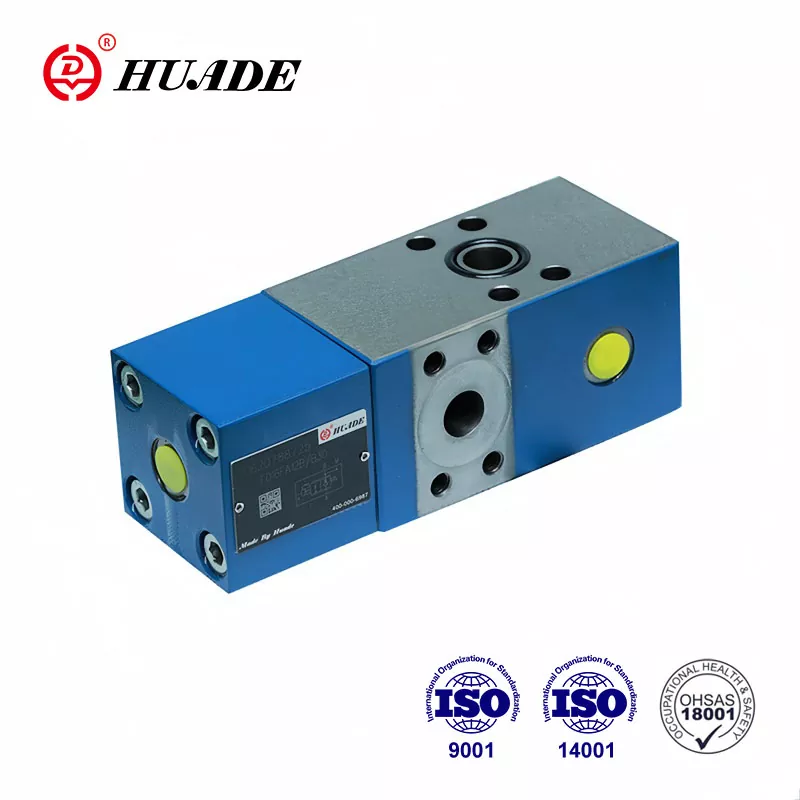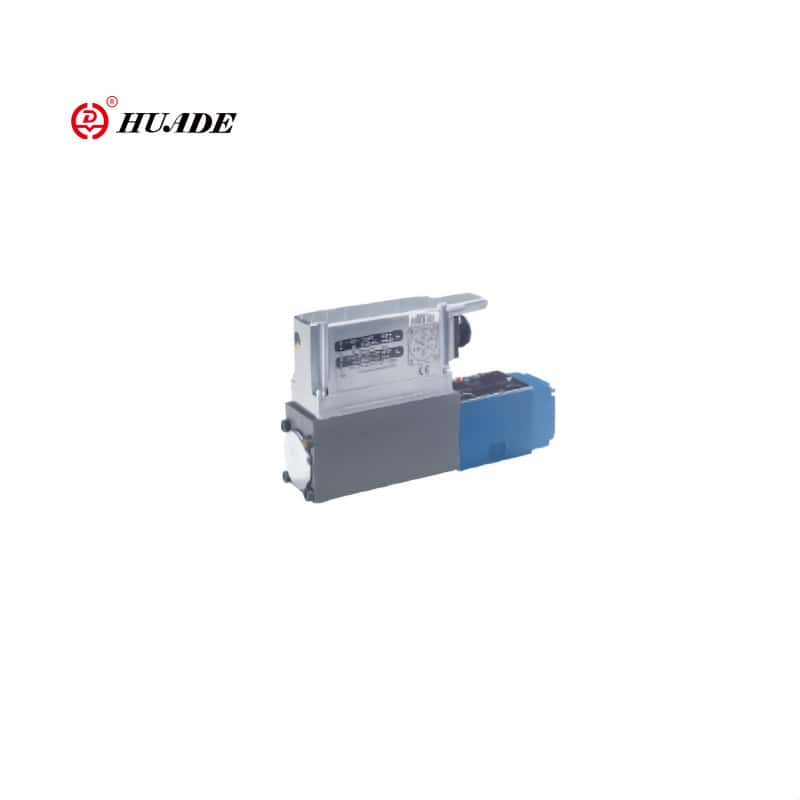When you look at a hydraulic circuit diagram, the 2 way hydraulic valve diagram appears as one of the simplest symbols on the page. Two connected boxes, a few lines, maybe a spring symbol. But this basic element controls some of the most critical functions in industrial systems, from holding a 50-ton crane boom in position to protecting expensive pumps from pressure spikes.
A 2 way hydraulic valve, also called a 2/2 valve, has two ports and two positions. The notation might seem abstract at first, but it follows a logical pattern. The first number tells you how many ports the valve has (where fluid enters and exits), and the second number tells you how many distinct positions the valve can take. In the case of a 2 way hydraulic valve diagram, we're dealing with the most fundamental binary logic in fluid power: flow or no flow.
Think of your kitchen faucet. When you turn the handle, you're operating a basic two-way valve. Water either flows or it doesn't. Industrial 2/2 valves work on the same principle, except they might be controlling 3,530 liters per minute of hydraulic oil at 630 bar pressure instead of tap water at 4 bar.
Reading the Standard 2 Way Hydraulic Valve Diagram Symbols
The hydraulic industry uses ISO 1219-1 as the international standard for circuit symbols. This matters because an engineer in Germany needs to understand a diagram drawn in Japan without confusion. The standard establishes that symbols represent function, not physical appearance. You're not looking at a picture of the actual valve. You're looking at a functional map of what the valve does to fluid flow.
In a 2 way hydraulic valve diagram, each working position gets its own square box. Since we have two positions, you'll always see two boxes side by side. The box closest to the spring symbol or other return mechanism shows the rest position, which is the state the valve sits in when no one activates it. The other box shows what happens when you do activate it, whether that's pressing a button, energizing a solenoid, or applying pilot pressure.
Inside these boxes, simple lines and symbols tell you everything about flow paths. A straight line or arrow means fluid can pass through that position. A "T" symbol, which looks like a line perpendicular to the flow path, means that port is blocked. If you see a 2 way hydraulic valve diagram with a "T" in the rest position box, you're looking at a normally closed valve. The opposite configuration, with the "T" in the activated position, indicates a normally open valve.
The activation method appears outside the boxes. A solenoid coil symbol means electrical control. A spring shows mechanical return. A dashed line pointing to the valve indicates pilot pressure control, where a separate hydraulic signal moves the valve instead of direct mechanical or electrical force.
Port labels follow their own standards too. You'll typically see "P" for pressure inlet (pump connection) and "A" for the working port (actuator connection). Sometimes you'll see "T" for tank return. These letter codes stay consistent across manufacturers, though older European diagrams might use numbers instead. ISO 9461 standardizes these port identifications to reduce confusion during installation and maintenance.
Structural Types: Poppet vs Spool Design in 2 Way Valves
When you move past the 2 way hydraulic valve diagram on paper to the actual physical component, you encounter two fundamentally different internal mechanisms. The choice between poppet (also called seat valve) and spool construction determines whether your valve can hold a static load for hours without drift or handle rapid cycling at high frequency.
Poppet valves use a cone-shaped or disc-shaped element that presses against a matching seat. When closed, metal meets metal with spring force behind it. This creates what the industry calls near-zero leakage. The hydraulic fluid cannot sneak past a properly sealed poppet valve even under 400 bar pressure. This makes poppet-style 2 way valves the only choice for safety-critical applications like load holding circuits on aerial work platforms or mobile cranes.
The FCI 70-2 leakage standard quantifies this performance. Class IV allows leakage equivalent to 0.01% of rated capacity, which works fine for general industrial use. But when you need absolute security, you specify Class V or Class VI. Class VI, sometimes called soft-seat classification, permits only milliliters per minute of leakage even at full differential pressure. Only poppet valves reliably achieve these ratings because the sealing mechanism doesn't depend on tight mechanical clearances that inevitably wear.
Spool valves take a different approach. A precisely machined cylindrical core slides inside an equally precise bore. Lands on the spool block flow, while grooves allow it. The clearance between spool and bore must be large enough to permit smooth motion but small enough to minimize leakage. This inherent compromise means spool valves always leak internally to some degree.
But spool designs offer their own advantages. Response times tend to be more consistent and predictable. Manufacturing costs run lower for simple on-off applications. In systems where some leakage doesn't matter, like temporary circuit isolation during maintenance, a spool-type 2 way valve works perfectly well at lower cost.
The performance differences show up clearly in real applications. Install a spool valve on a vertical cylinder holding a suspended load, and you'll measure downward drift over hours as internal leakage lets oil slip past. Install a poppet valve rated Class VI, and that cylinder stays locked in position for days. The 2 way hydraulic valve diagram might look identical for both, but the engineering reality differs completely.
| Characteristic | Poppet (Seat) Valve | Spool Valve | Application Impact |
|---|---|---|---|
| Sealing/Leakage | Near-zero (Class V/VI achievable) | Measurable internal leakage (Class III/IV typical) | Determines suitability for static load holding and safety circuits |
| Response Speed | Fast, instant engagement | Consistent, typically slower | Critical for high-frequency or time-sensitive control loops |
| Flow Capacity | Very high (especially cartridge designs) | Limited by spool diameter and clearance | Poppet cartridges can switch massive hydraulic power |
| Pressure Rating | Up to 630 bar in industrial cartridges | Varies by design, typically lower | High-pressure systems favor poppet construction |
Dynamic response also differs. Poppet valves snap open and closed quickly because the stroke length is short. You're just lifting a cone off its seat, not sliding a spool across multiple ports. This makes poppet-type 2 way valves ideal for applications requiring instant flow initiation, like emergency shutdown circuits or anti-cavitation protection.
Critical Circuit Applications Using 2 Way Hydraulic Valve Diagrams
The real value of understanding 2 way hydraulic valve diagrams becomes clear when you see where these components solve actual engineering problems. Some applications absolutely require the specific characteristics that 2/2 valves provide.
Load Holding and Counterbalance Circuits
Picture an excavator boom holding a full bucket three meters in the air. The hydraulic cylinder supporting that load must not drift downward even one millimeter, even over hours, even if a hydraulic hose develops a small leak. This requires pilot-operated check valves, which are specialized 2 way elements shown in circuit diagrams with an additional dashed line indicating the pilot control port.
[Image of counterbalance valve circuit diagram]A pilot-operated check valve (POCV) allows free flow in one direction, filling the cylinder as the boom rises. But in the reverse direction, flow is absolutely blocked until pilot pressure arrives through the control line. The 2 way hydraulic valve diagram shows this as a standard check valve symbol plus the pilot line. When the operator commands the boom to lower, pilot pressure mechanically lifts the sealing element, permitting controlled oil discharge.
The zero-leakage characteristic of poppet construction makes POCVs work. Even a small leak rate would cause the boom to slowly sink. But POCVs have a limitation. They're not metering devices. They're either fully closed or fully open. When lowering a heavy load assisted by gravity, a simple POCV can cause jerky motion as the valve hunting between open and closed states.
This is where counterbalance valves come in. A counterbalance valve is a more sophisticated 2 way element that combines a check valve for free flow in one direction with a pressure-controlled relief valve for the return path. The 2 way hydraulic valve diagram for a counterbalance valve shows three functional components: the check valve, the relief element, and a pilot piston that reduces the relief valve opening pressure.
When the operator initiates a lowering motion, pilot pressure from the directional control valve acts on the pilot piston. This pilot signal combines with load-induced pressure to modulate the relief valve, metering the return flow. The result is smooth, controlled descent even with heavy overrunning loads. By mounting the counterbalance valve directly at the actuator rather than at the main control valve, you localize the flow control responsibility right where it matters most.
Accumulator Charging and Unloading Circuits
In systems using fixed-displacement pumps with hydraulic accumulators, you need a special 2 way unloading valve to manage pump flow efficiently. When the accumulator reaches full charge, continuing to pump against that pressure wastes energy and generates heat. The unloading valve solves this by redirecting pump flow to tank at near-zero pressure once the accumulator is charged.
The typical accumulator charging valve is a two-stage cartridge element with a poppet pilot stage and spool main stage. The 2 way hydraulic valve diagram shows it connecting pump flow (P) to either the accumulator or tank (A and B). When system pressure drops below the "open" setpoint due to actuator usage, the valve blocks tank return, forcing pump flow back into accumulator charging. When pressure rises to the "close" setpoint, the valve shifts to unload the pump.
This requires soft-shifting characteristics and proper damping in the design. Abrupt transitions between loading and unloading create pressure spikes that damage pumps and stress fittings. Well-designed unloading valves include internal damping chambers that slow the switching motion, spreading the pressure transition over several milliseconds instead of an instantaneous snap.
Flow Control for Speed Regulation
2 way hydraulic flow control valves appear in circuit diagrams with a throttle restriction symbol, shown as two angled lines or curves forming a narrowed passage. An adjustable throttle adds a diagonal arrow through the restriction symbol, indicating variable orifice area. These valves control actuator speed by limiting flow rate rather than blocking it completely.
The relationship between flow and speed follows hydraulic fundamentals. For a given cylinder bore, velocity equals flow rate divided by piston area. By restricting flow through an adjustable orifice, you directly control how fast the cylinder extends or retracts. The throttle creates a pressure drop, and flow through that restriction depends on the square root of the pressure difference across it.
Advanced 2 way flow control valves include pressure compensation. The 2 way hydraulic valve diagram shows this as an additional pressure-controlled element, usually represented by an arrow indicating the compensator piston. This compensator automatically adjusts the throttle opening to maintain constant flow output regardless of load pressure variations. Without compensation, a cylinder would slow down as load increases because higher load pressure reduces the differential across the throttle. With compensation, the valve holds cylinder speed steady even as load changes dramatically.
Cartridge Valve Technology and High-Density Control
When you need to switch very high flow rates in compact spaces, the 2 way hydraulic valve diagram might show a cartridge-style element rather than a conventional body-mounted valve. Cartridge valves, also called slip-in logic elements, represent a sophisticated approach to hydraulic control that maximizes power density.
A cartridge valve is essentially a hydraulic logic module inserted into a manifold bore and controlled by a separate cover plate. The 2 way hydraulic valve diagram symbol looks similar to standard valves, but the physical implementation differs completely. Instead of a self-contained unit with threaded ports, you have a cylindrical cartridge that drops into a precision-machined cavity. All the plumbing is internal to the manifold block.
This architecture enables extreme flow capacity. Industrial 2 way cartridge valves handle up to 3,530 liters per minute while maintaining very low pressure drop, often under 1 bar even at maximum flow. High flow with low pressure drop translates directly to energy efficiency. Less pressure loss means less heat generation and lower operating costs.
The control principle uses pilot amplification. A small pilot valve, which might only switch a few liters per minute, controls high-pressure oil that moves the main cartridge poppet. This decouples control power from main flow power. You can switch hundreds of kilowatts of hydraulic power using a tiny solenoid that consumes maybe 20 watts electrically.
The cartridge design also builds in diagnostic features. Control covers typically include leak detection ports and inspection windows. When internal seals begin to fail, the leaked oil appears at these diagnostic ports before system performance degrades noticeably. This early warning prevents unexpected downtime.
One key consideration is pilot supply requirements. The 2 way hydraulic valve diagram needs to show the pilot pressure source. Some cartridge valves can operate as normally open or normally closed depending on pilot configuration. The cover plate design determines the logic, while the cartridge itself remains the same. This modularity reduces inventory requirements since one cartridge part number serves multiple functions.
Solenoid Actuation: Direct vs Pilot-Operated
The 2 way hydraulic valve diagram shows actuation methods with symbols outside the position boxes. Solenoid-controlled valves appear with a coil symbol, but that simple graphic hides an important design choice that affects system performance.
Direct-acting solenoid valves use electromagnetic force to move the valve element directly. When you energize the coil, the magnetic field pulls an armature that physically pushes the poppet or spool. These valves respond very quickly, often within milliseconds, because there's no intermediate step. But the electromagnetic force available limits the valve size. Larger valves need larger solenoids, which consume more electrical power and generate more heat.
Pilot-operated solenoid valves take a two-stage approach. The solenoid moves a small pilot valve, which then directs hydraulic pressure to move the main valve element. This leverages hydraulic force multiplication. A small, low-power solenoid controls a pilot that switches high-pressure oil that drives a large main spool or poppet. The result is that pilot-operated 2 way valves can handle much higher flow rates than direct-acting designs.
The tradeoff is response time. Pilot-operated valves respond more slowly because the pilot stage must move first, then pressurize a control chamber, then wait for the main element to shift. This added delay might only be 20 to 50 milliseconds, but in high-speed automation or precise motion control, those milliseconds matter.
In practice, direct-acting solenoid valves work well up to about 80 liters per minute at standard industrial pressures. Beyond that, you typically need pilot operation. The 2 way hydraulic valve diagram doesn't always specify which type, so you need to check manufacturer datasheets when response time is critical.
Another consideration is power consumption during holding. Direct-acting solenoids need continuous current to hold the valve open against spring force and fluid pressure. Pilot-operated valves use pressure to hold the main element, so the solenoid only needs to keep the small pilot valve shifted. This reduces electrical load and heat generation in the solenoid coil.
Selection Criteria and Technical Specifications
When you're designing a circuit and deciding which 2 way hydraulic valve to specify, the diagram tells you the logic function but not the performance requirements. Several key parameters determine whether a valve will work reliably in your application.
Maximum working pressure defines the structural limit. A valve rated for 350 bar will fail catastrophically if you exceed that pressure significantly. But pressure rating alone doesn't tell the whole story. Some valves maintain their rated flow only up to a certain pressure, then derate as pressure increases due to internal clearance deformation or seal compression.
Flow capacity requires careful matching to system needs. Undersized valves create excessive pressure drop, which wastes energy and generates heat. Oversized valves cost more and might cause control instability. The valve coefficient (Cv) quantifies how much flow passes through for a given pressure drop. You calculate required Cv from your flow rate and acceptable pressure loss, then select a valve that meets that requirement with some safety margin.
| Parameter | Engineering Significance | Typical Range (Example Industrial Valves) |
|---|---|---|
| Maximum Working Pressure | Structural integrity and durability limit | 210 to 630 bar for industrial cartridge valves |
| Maximum Flow Rate | Throughput capacity and pressure drop | 7.5 to 3,530 L/min depending on design |
| Response Time | Dynamic speed and cycle rate capability | 5-20 ms (direct-acting) to 30-80 ms (pilot-operated) |
| Leakage Class (FCI 70-2) | Sealing performance standard | Class IV (general) to Class VI (safety-critical) |
| Operating Temperature Range | Seal and viscosity limits | -20°C to +80°C typical, wider for special fluids |
| Fluid Viscosity Range | Proper operation and seal compatibility | 15 to 400 cSt for most industrial valves |
Leakage classification matters most in load-holding applications. If your 2 way hydraulic valve diagram shows a valve that must prevent load drift, specify Class V or Class VI. For simple isolation during maintenance, Class IV suffices. The cost difference between leakage classes can be substantial, so don't over-specify unnecessarily.
Response time becomes critical in automated production lines or mobile equipment where cycle time determines productivity. If your excavator boom needs to stop moving within 100 milliseconds when the operator releases the joystick, your valve choice needs to support that timing. Account for both valve switching time and the time required for pressure to build or collapse in the circuit.
Fluid compatibility is non-negotiable. Standard Nitrile (NBR) seals work fine with petroleum-based hydraulic oil but swell and fail in certain synthetic fluids. If you're using biodegradable ester-based hydraulic fluid or fire-resistant water-glycol, verify seal compatibility explicitly. The wrong seal material leads to early failure even if all other specifications are correct.
Operating temperature affects both seal life and fluid viscosity. Hydraulic oil viscosity changes dramatically with temperature. At -20°C, your ISO VG 46 oil might be as thick as honey. At 80°C, it flows like water. This viscosity change affects pressure drop through valves and can impact response time. Some 2 way flow control valves use sharp-edged orifices specifically because flow through a sharp edge is less viscosity-dependent than flow through a long, small-diameter passage.
Troubleshooting Common Issues with 2 Way Valve Circuits
Even when your 2 way hydraulic valve diagram is correctly drawn and you've selected appropriate components, problems can emerge during operation. Understanding common failure modes helps with fast diagnosis and prevents minor issues from becoming expensive failures.
Contamination and Response Degradation
Fluid contamination is the leading cause of valve performance problems. When hydraulic oil becomes contaminated with particles or the viscosity degrades from thermal breakdown, several symptoms appear. Sluggish response is often the first sign. Dirt particles lodge in the small clearances between moving parts, creating friction that slows valve actuation. A valve that should shift in 15 milliseconds might take 50 milliseconds when contaminated.
This seemingly minor delay cascades through the system. In automated manufacturing, every cycle's extra milliseconds add up to lost production. In mobile equipment, operator response feels sluggish, reducing positioning accuracy. Worse, delayed valve closure causes pressure spikes as moving actuators suddenly encounter resistance, generating shock waves that fatigue fittings and hoses.
The ISO 4406 cleanliness standard quantifies particle contamination. A typical industrial hydraulic system might target 19/17/14, which specifies maximum particle counts at 4, 6, and 14 micron sizes. But servo valves and high-performance proportional valves need much cleaner fluid, perhaps 16/14/11. When oil exceeds these limits, valve performance deteriorates measurably.
Regular oil analysis and filter replacement maintain valve response times. High-quality filtration systems pay for themselves quickly by preventing contamination-related problems. Some advanced systems include online particle counters that alert operators when contamination reaches warning levels, allowing preventive action before valve performance degrades.
Valve Chatter and Dynamic Instability
Valve chatter describes rapid, repeated opening and closing around the operating point. You hear it as a buzzing or hammering sound, and it can destroy valve components through rapid mechanical cycling. Chatter usually indicates incorrect valve sizing or insufficient system pressure differential, not component failure.
When a valve's flow coefficient doesn't match the system's actual flow requirement, the valve operates in an unstable region of its flow curve. Small pressure fluctuations cause large position changes, creating oscillation. The valve hunting between open and closed states, never settling at a stable position.
Pressure differential affects this too. If upstream and downstream pressure are too close, the valve has insufficient force to hold a stable position. Industry practice recommends maintaining at least 1 psi (0.07 bar) differential across flow control valves to ensure stable operation. When differential drops below this, chatter becomes likely.
The solution involves proper valve sizing based on minimum pressure drop requirements rather than just maximum flow capacity. A valve sized for the absolute maximum flow might be too large for normal operation, leaving insufficient differential to maintain stability. Better to size valves for typical operating conditions with adequate pressure margin, then accept somewhat higher pressure drop at maximum flow.
Internal Leakage and Load Drift
In circuits using 2 way valves for load holding, any internal leakage manifests as slow, continuous drift. A suspended load gradually lowers. A horizontal actuator slowly retracts. This drift might be barely noticeable over minutes but become obvious over hours or a full shift.
First verify whether the issue is actually the 2 way valve or elsewhere in the circuit. Connect a pressure gauge at the valve outlet and watch for pressure decay. If pressure drops steadily with the actuator locked, something is leaking. If pressure holds steady but the actuator still drifts, leakage is occurring downstream, possibly across the actuator's piston seals.
When the 2 way valve itself is leaking, determine whether it's exceeding its design specification or has degraded from wear. A Class IV valve leaking at 0.01% of rated flow is performing to spec, even though that might not be tight enough for your application. In this case, you need a tighter classification like Class VI, not a valve repair.
If a previously tight valve begins leaking, inspect for three common causes. Contamination can damage sealing surfaces. Thermal cycling might have degraded seal material. Pressure spikes beyond rating might have damaged the poppet seat. Sometimes the valve just needs cleaning and fresh seals. Other times, the application has exceeded the valve's design limits and you need a more robust component.
Understanding the difference between design limitations and component failure matters because the solutions differ completely. Asking for a tighter leakage class at the design stage costs a little more but solves the problem permanently. Repeatedly replacing worn-out valves that were never suitable for the application wastes time and money while never truly fixing the issue.
The 2 way hydraulic valve diagram on your schematic might look simple, but these elements enable some of the most critical functions in fluid power systems. Getting the diagram right, selecting appropriate components, and maintaining them properly ensures your hydraulic circuits deliver reliable performance for years of operation.


